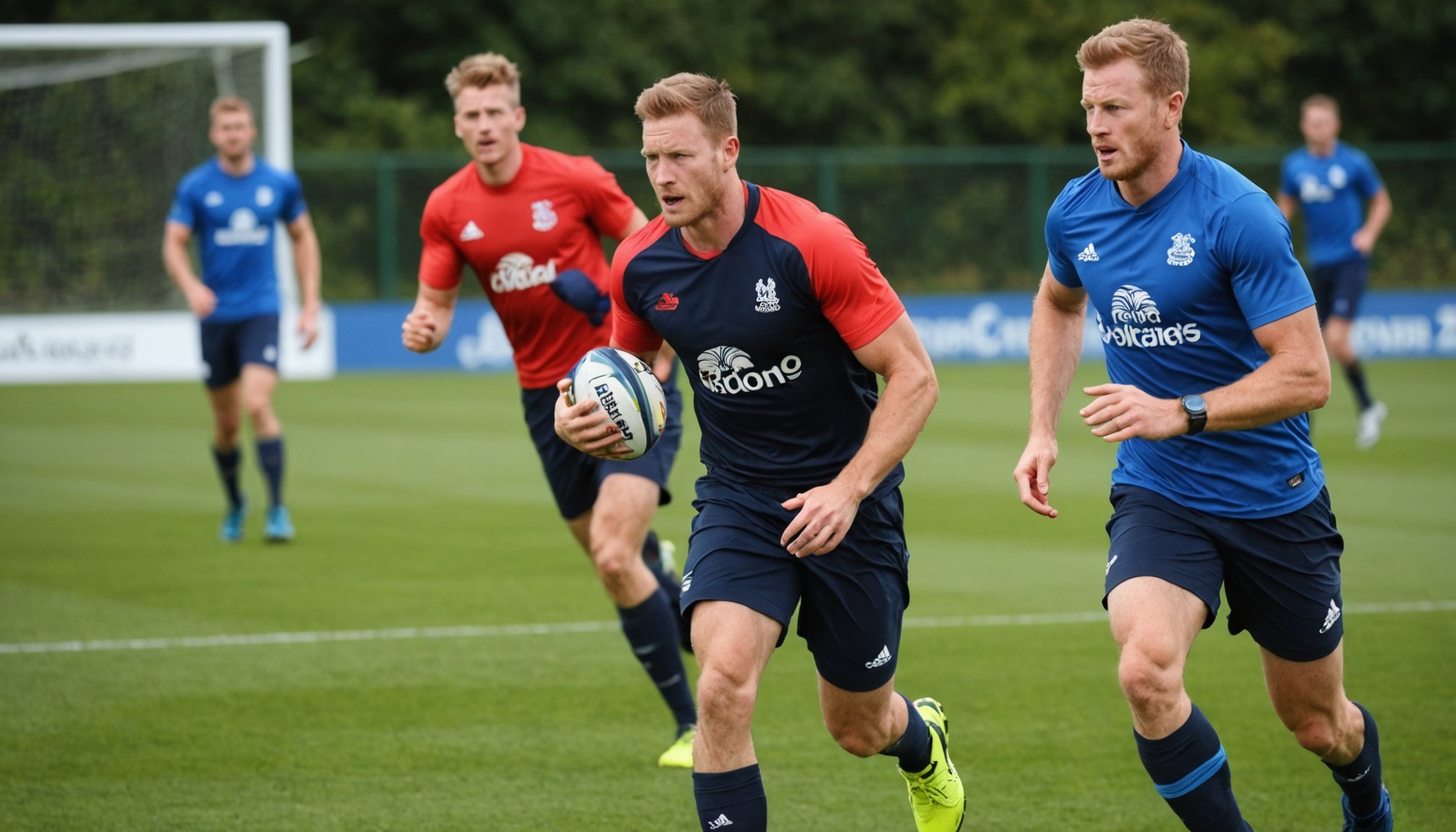Understanding Athlete Loyalty
In the fast-paced world of sports, athlete loyalty is a pivotal component for the success of any club. At its core, athlete loyalty refers to the enduring commitment and emotional attachment an athlete has towards their sports club. This allegiance is not only significant for maintaining a cohesive team environment but also serves as a critical factor in the long-term success and financial stability of sports clubs.
The importance of athlete loyalty cannot be overstated. It directly impacts a club’s ability to perform consistently, harness long-term talent development, and reduce turnover costs. Consequently, UK sports clubs are increasingly focusing on innovative retention strategies to cultivate and maintain athlete loyalty.
Additional reading : Unlocking Wave Wisdom: How UK Surf Coaches Leverage Oceanography to Master Wave Selection Skills
Multiple factors influence athlete retention in sports clubs. These encompass effective communication between athletes and management, providing opportunities for skill development, and fostering a supportive club culture that aligns with athletes’ personal and professional ambitions.
In the UK, the current state of athlete loyalty is predominantly shaped by these retention strategies. UK sports clubs are leading the charge by prioritising athlete engagement and satisfaction, thus ensuring a stable and committed team dynamic, which is paramount for enduring success in the competitive sports landscape.
In the same genre : Building Resilience: Strategies for UK Sports Teams to Foster a Culture of Perseverance
Innovative Communication Strategies
Effective communication is crucial for maintaining strong relationships within sports organizations. Proactively engaging athletes through digital platforms ensures members stay informed and involved. Regular updates via apps or social media can foster a sense of community and provide quick access to new information.
Understanding athlete feedback is key. Asking athletes directly about their experiences helps gather detailed insights. This feedback should be actively considered in planning and decision-making processes. Listening means genuinely addressing concerns and implementing feasible suggestions, creating a more engaging environment for members.
To enhance member engagement, consider these strategies:
- Host virtual Q&A sessions where athletes can interact with coaches and leadership.
- Use surveys to identify areas needing improvement, and publish findings transparently.
- Share success stories and milestones on digital platforms to celebrate achievements together.
Incorporating these techniques enables organizations to create a supportive, responsive atmosphere. Digital platforms not only facilitate efficient information dissemination but also play a vital role in maintaining consistent dialogue. When executed thoughtfully, effective communication strategies can significantly impact member satisfaction and overall organizational success, building trust and strengthening connections across the board.
Building a Strong Community Atmosphere
Fostering a strong community atmosphere within any organisation, particularly in sports clubs, is crucial for encouraging athlete connections and enhancing club culture. At the heart of effective community building are events that unite members, instilling a sense of belonging. These gatherings can range from informal meet-ups to organised sports tournaments, each aiming to strengthen bonds among athletes.
Peer relationships play a pivotal role in athlete retention. When athletes form meaningful connections within their club, they are more likely to stay committed and motivated. This connection extends beyond the sport, creating a network of support and camaraderie that is invaluable. Strategies for nurturing these relationships include mentorship programs and team-building activities, both designed to deepen athletes’ commitment to each other and the club.
A supportive club culture is also vital to community building. Clear communication, inclusivity, and recognition of individual achievements all contribute to a welcoming environment. Clubs should prioritise creating policies that encourage participation and respect, fostering a space where athletes feel valued and encouraged to thrive. By prioritising these elements, clubs can cultivate a thriving community that supports both individual and collective success.
Personalized Experiences for Athletes
In today’s athletic world, personalized services are reshaping how athletes train and perform. By offering tailored training programs, coaches can focus on each athlete’s unique strengths and areas for improvement.
Athletes benefit from custom experiences that are fine-tuned to their personal goals and preferences. This not only boosts performance but also contributes to overall well-being and satisfaction. Happy athletes are more likely to stay committed to their training regimens, leading to improved outcomes.
Utilizing data and analytics is key to understanding individual preferences and needs. Coaches can assess performance data to craft personalized plans that align with an athlete’s specific requirements. This data-driven approach ensures that athletes receive the most effective training for their particular disciplines, reducing the risk of injury and maximizing potential.
By focusing on athlete satisfaction, sports professionals create environments where athletes thrive. Personalized experiences help to maintain motivation, encourage progress, and ultimately, foster a sense of accomplishment. These bespoke approaches lead to better results on and off the field, illustrating the importance of catering to the individual needs of each athlete.
Implementing Rewards Programs
An effective rewards program is central to enhancing athlete motivation and ensuring engagement. It’s about more than simply offering loyalty incentives; it involves creating a meaningful connection between achievements and rewards.
A successful rewards program begins with understanding the specific needs and aspirations of athletes. For instance, programs can include various loyalty incentives such as performance-based recognition, exclusive access to events, or personalised training sessions.
In the UK, several sports clubs are shining examples of excellence in athlete rewards. These clubs tailor their programs to align with athletes’ personal and professional goals, fostering a motivating environment. This approach not only boosts participation but also enhances commitment to long-term objectives.
Flexibility is key. Programs need to adapt as athletes’ needs evolve. Clubs must regularly assess the effectiveness of their strategies, gathering feedback to refine the delivery of rewards. Clear communication ensures that athletes understand what rewards are available and how to achieve them.
Ultimately, implementing an effective rewards program requires a strategic blend of motivation and personalisation. By aligning goals and rewards, clubs can maintain a vibrant, engaged community, setting the stage for sustained success.
Case Studies and Best Practices
Exploring success stories from UK sports clubs can provide valuable insights into effective strategies. Several UK sports clubs have excelled in designing and implementing best practices for athlete retention. These stories can serve as a guide for others seeking similar success.
For instance, a prominent UK rugby club significantly improved athlete retention by implementing personalized coaching programs. By focusing on individual player development, the club managed to keep its athletes engaged and motivated. The club’s strategy involved regular feedback sessions and tailored training schedules, proving highly effective.
Moreover, a well-known football club in the UK adopted community engagement as a core practice. This club organized local events where players volunteered, fostering a strong connection between the athletes and their community. As a result, athletes felt a greater sense of belonging, improving retention rates and enhancing team spirit.
Key Takeaways
- Personalized coaching: Tailoring training to individual needs promotes engagement.
- Community involvement: Encouraging athletes to participate in local activities builds cohesion.
- Regular feedback: Continuous communication and adjustments to training plans keep athletes motivated.
These best practices offer valuable lessons that other sports clubs can implement to enhance athlete retention and foster success.
Tools and Resources for Sports Clubs
Sports clubs aiming for success need access to the right resources for clubs. With athlete engagement being a key aspect, leveraging engagement tools is crucial. These tools include apps and platforms that monitor and enhance athlete involvement. Enhanced engagement often leads to higher retention and improved performance.
Platforms like TeamSnap and Sportlyzer offer comprehensive solutions. They provide calendars, communication for team coordination, and analytical insights to track progress. Sports clubs using such platforms report better athlete retention, thanks to structured communication and scheduling features.
Training platforms like TrainHeroic and Hudl are essential resources for clubs focusing on advanced training methods. These platforms offer customised training sessions and video analysis to help athletes reach their potential. They facilitate ongoing education for club staff, ensuring training remains current and impactful.
Additionally, there are specific resources for ongoing education. Programs like “SafeSport” and “Coaching Association of Canada” provide educational materials and workshops focused on ethical coaching and athlete safety. Accessing these resources is integral to creating a safe and motivating environment for athletes, aiding in the long-term success of sports clubs.
Ultimately, the combination of the right tools and resources equips clubs to foster a thriving sports community.






